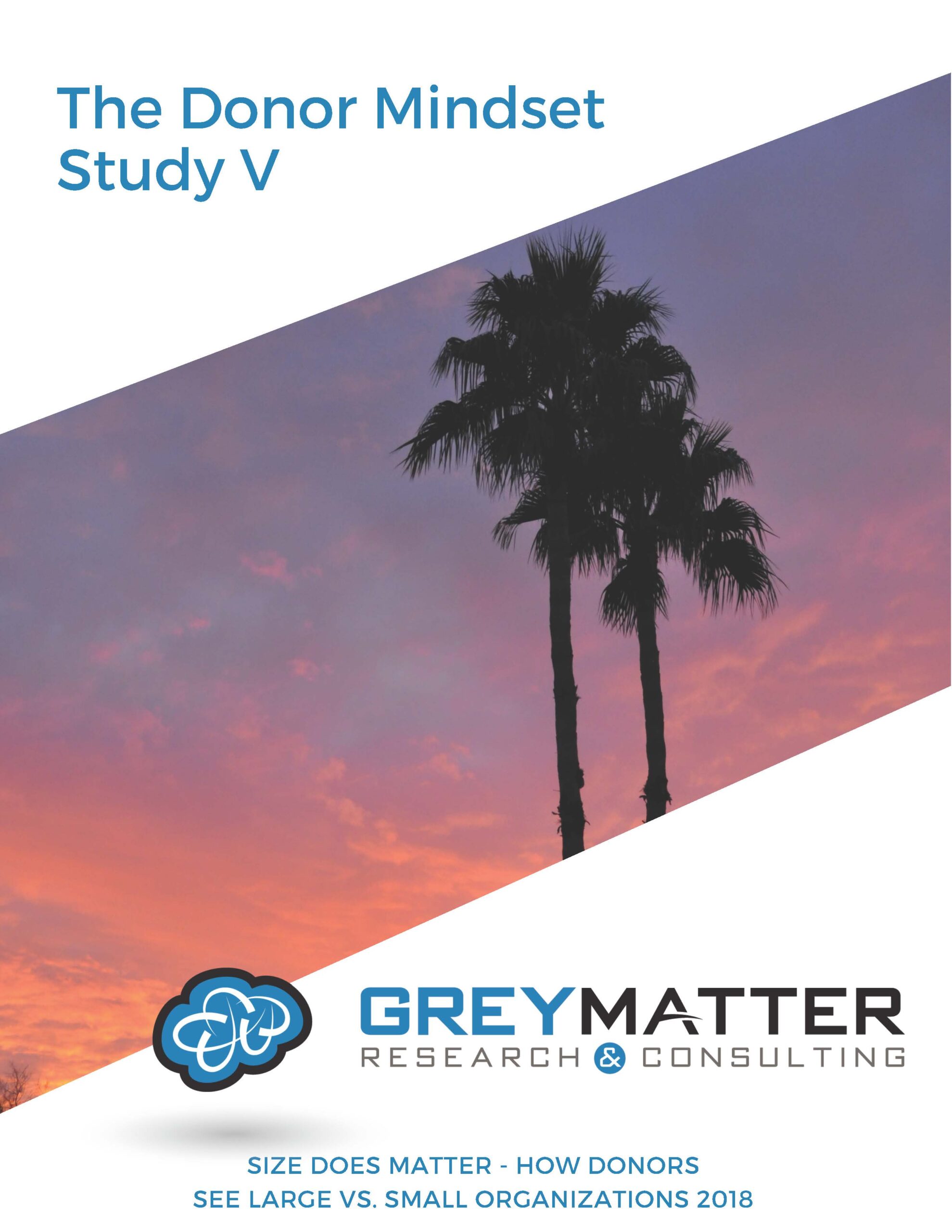
Does Size Matter?
Size matters when it comes to donor perceptions of non-profit organizations and ministries.
Our study of American charitable donors shows nine out of ten form perceptions of non-profits partly according to how big (or small) they are.
In many qualitative studies, Grey Matter Research hears from donors that size matters. “I want to support small organizations so I know where my money goes.” “Big ministries can do so much more than smaller ones.” “Small organizations are so much more efficient.”
So, like any good consumer insights company should, we took what we hear in qualitative research and quantified it. The result is our fifth installment of The Donor Mindset Study. Size Does Matter – How Donors See Large vs. Small Organizations is available free. Just e-mail ron@greymatterresearch.com.
Size Advantages and Disadvantages
Size matters. In the mind of the typical American donor, larger charities are more effective in their work than smaller ones. They’re also better at communicating with donors, and have greater dollar-for-dollar impact.
At the same time, smaller charities are perceived as spending a lower proportion on overhead and administration. They’re also viewed as needing donations more than larger organizations.
The research demonstrates size does influence perceptions for most donors. Just 12% see no differences between smaller and larger charities on any of the seven attributes we tested.
The Details
But how size affects perceptions varies. Larger charities have the perceptual advantage in three areas:
- Which tend to be better at communicating with you as a donor? (Larger charities, 38% to 25%)
- Which tend to be more effective in their work? (Larger charities, 37% to 25%)
- Which tend to have more impact dollar-for-dollar? (Larger charities, 37% to 29%)
Smaller charities have the edge in two of the seven areas:
- Which tend to spend a lower proportion of donations on administration, fundraising, and overhead? (Smaller charities, 43% to 29%)
- Which tend to need your donations more? (Smaller charities, 46% to 24%)
And in the last two areas, neither type has an advantage:
- Which tend to be more trustworthy? (No difference, 29% to 29%)
- Which tend to be the type you prefer to support? (No difference, 27% to 27%)
Different Donors See It Differently
While the numbers above reflect donors overall, our study indicates there are substantial differences among different types of donors. Men consistently give a stronger advantage to larger charities. Women, on the other hand, are less likely than men to see size-based differences. When they do, they tend to see more advantages to smaller organizations.
There is also a substantial size bias by age. Donors under age 35 consistently are almost twice as likely to give the advantage to larger charities over smaller ones. This gradually changes as age increases, until the oldest donors (65 and over) average nearly two-to-one on the side of smaller organizations on these seven attributes.
Further, there is consistent variation by race/ethnicity and religion. Non-Hispanic Caucasian donors tend to give a slim advantage to smaller organizations over larger ones, while all other racial and ethnic groups combined see strong advantages to larger organizations, averaging more than two-to-one in favor of larger charities on the seven tested attributes.
Finally, while there is little difference between self-identified Christians and donors from other faith traditions, those who have no faith preference (atheists, agnostics, and “nones”) consistently see smaller organizations as having advantages over larger ones. Within the Christian tradition, Protestants tend to give an edge to smaller organizations, while Catholics regularly see advantages to larger charities.
Why This Matters
Ron Sellers, president of Grey Matter Research, notes that charitable organizations need to take these biases into consideration in their marketing, branding, and communications. “Some might figure they can’t do anything about their size, so this factor can be ignored. That’s a mistake,” Sellers explains. “Organizations need to understand how their size matters to donors, so they can play to their strengths and adjust for their perceived weakness.”
Sellers offers a few examples of this. “We know donors tend to see smaller organizations as having lower overhead ratios. If you’re a large organization with low overhead, you may need to emphasize this fact a little more. On the other hand, donors believe larger organizations are better at communicating with them. Smaller organizations need to evaluate their donor communications and see what they can learn from what larger organizations are doing well. Of course, if your organization attracts donors who tend to have a significant bias toward one size or the other, such as Catholics or younger people, you need to understand their biases in order to communicate more effectively with them.”
The study also shows there is substantial evidence these donor perceptions play out in how people actually give. Those who state a preference for larger organizations name a favorite charity that is nearly five times larger on average than those who prefer supporting a smaller organization.
The full study examines these donor perceptions more in-depth, including by religious identification, amount given, and various demographics. Please e-mail ron@greymatterresearch.com for a free copy of the full report.
About Grey Matter Research
Grey Matter Research is a marketing research and consumer insights company with extensive experience serving the non-profit world. We’ve served scores of donor-supported organizations as clients. Grey Matter works directly with non-profits and faith-based ministries, and in partnership with the fundraising, branding, and marketing agencies that support them.
